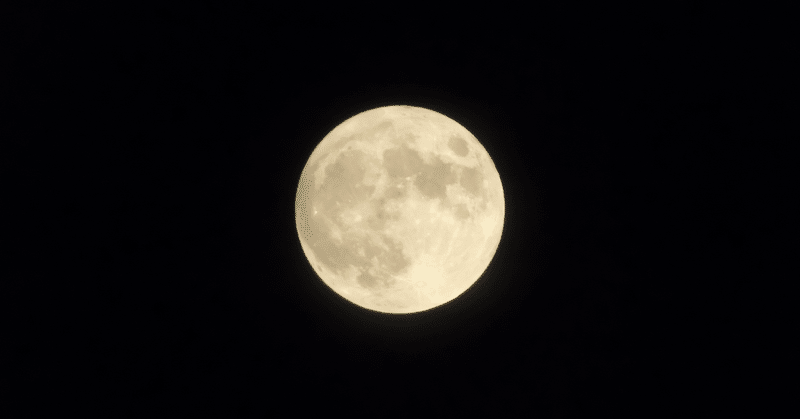
The Mid-Autumn Festival Moon Is Not Always Full
Introduction
The Mid-Autumn Festival, also known as the Moon Festival is the traditional event in East Asia. On the 15th night of the 8th month in the lunisolar calendar (now corresponds to around the middle of September in today's Gregorian calendar), people celebrate their harvest by watching the full moon.
In Japan, people call it this event "Otsukimi/お月見" or "Jugoya/十五夜".
As for "Otsukimi/お月見", "O/お" refers to an honorific title. Japanese people believe each object, including the moon, has each soul, and people show respects. "tsuki/月" and "mi/見" each refers to the moon, and watching.
Regarding "Jugoya/十五夜", "Jugo/十五" means 15 (10/ju/十+5/go/五=15/jugo/十五), and "ya/夜" is the night.
Many people consider Jugoya moon as full moon, but it's not always quite true. Jugoya often coincides with full moon, but Jugoya can be 1 night or 2 nights before, even 1 night after the full moon.
What's the Lunisolar Calendar?
The lunisolar calendar, also called as lunar calendar is based on the moon's synodic cycle.
The synodic month is around 29.53 days on average. Thus, the average age of the full moon is 14.765 days, which is one half of the synodic month.
The 1st day of one lunar month always includes the new moon.
One month of the lunisolar calendar is between 29 days to 30 days, and the 15th day is regarded as the full moon.
In Japan, the Tempo calendar in Edo period was a sort of lunisolar calendars, but the government in 1873 replaced it by the Gregorian calendar. Hence, the lunar calendar no longer exists legally in Japan as of 2024.
Instead, the National Astronomical Observatory of Japan calculates lunisolar calendar based on precise ephemeris.
Why This Happens?
The Age of the Full Moon Changes
The moon orbit is not circle but elliptic, so the moon's orbital speed changes by the Kepler's laws of planetary motion. Therefore, the age of the full moon changes between 13.9 days and 15.6 days.
Case 1: super moon

Case 2: younger full moon
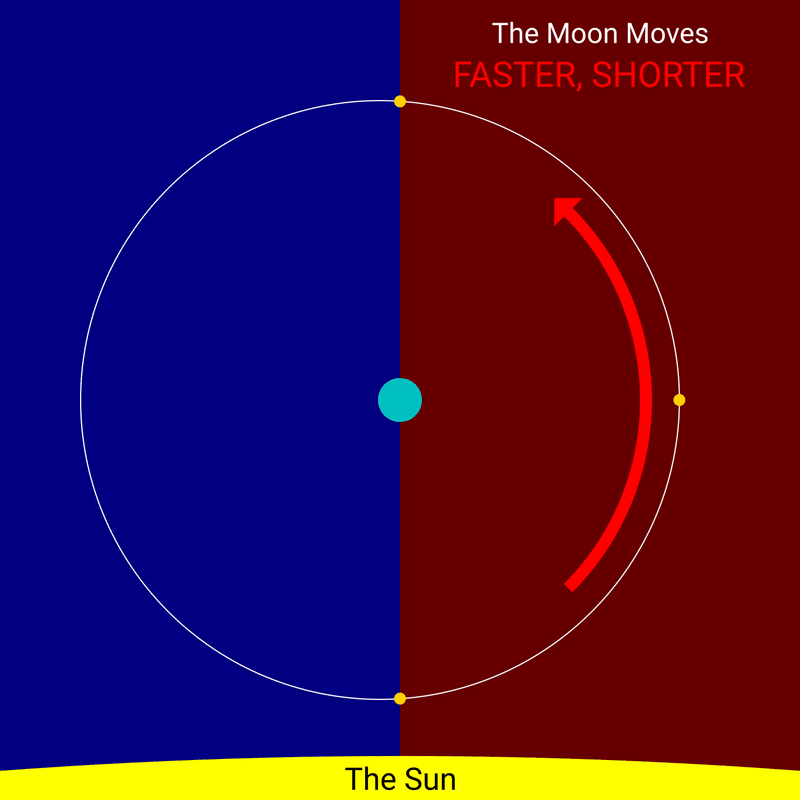
Case 3: micro moon

Case 4: older full moon
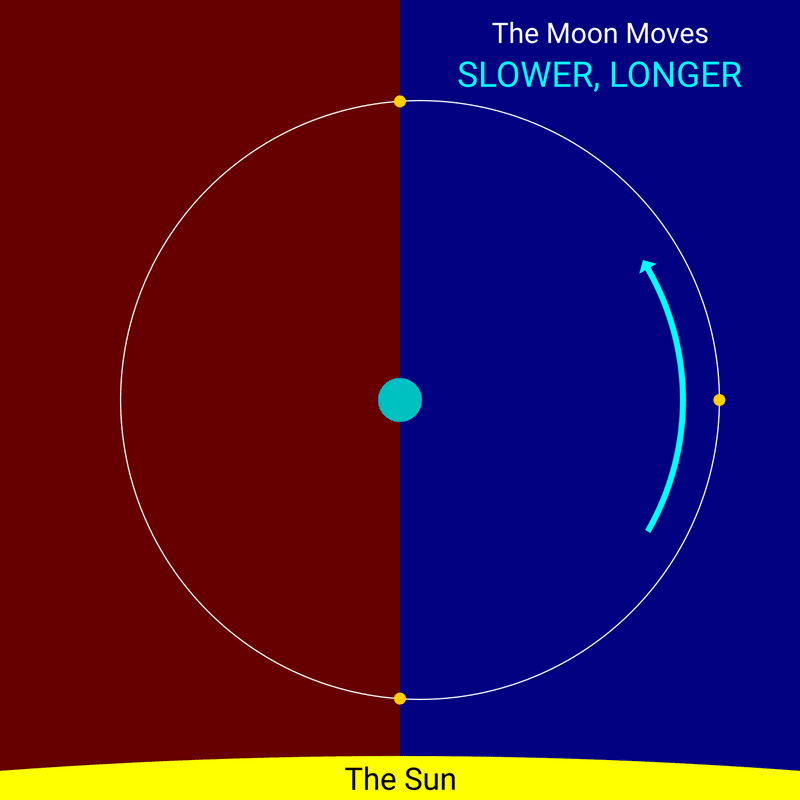
The New Moon Is Always On the 1st Day
The new moon always falls on 1st day in the lunisolar calendar. However, the new moon can be at 00:00 on the 1st day, while 23:59 is also possible.
Thus, the possible range of the new moon moment is as long as 1 day.
In the earliest case, when the new moon around 00:00 and the case 2 coincide, the full moon falls on the 14th day and barely misses the 15th day.
In the average case, when the new moon around 12:00 and the case 1 or 3 coincide, the full moon falls on the 16th day instead of the 15th day.
In the latest case, when the new moon around 23:59 and the case 4 coincide, the roundest moon appears in the 17th evening.

Let's See Details
When's the Jugoya & Full Moon?
Here's the table for the date of the harvest full moons from 1600 to 2200 and the corresponding lunar days.
Example 1
In 1600, the new moon is at 21:58:25 (UTC+9, Japan Standard Time) on 7 Sep .
The full moon falls on 23 Sep at 05:21:35 (UTC+9), which is the dawn of the 17th day.

Example 2
In 2023, the new moon is at 10:39:48 (UTC+9) on 15 Sep.
The full moon falls on 29 Sep at 18:57:32 (UTC+9), which is the night of the 15th day.

The Most Common Full Moon Occasion Is 16th Afternoon
The most common full moon occasion is 16th afternoon (class 66).
Although the Jugoya moon is not always full, the case of being full (class 63) is also as common as class 66.
We have only 2 out of the 601 harvest full moons which falls on the 14th day.

Total Lunar Eclipse on 20 Sep, 2127
This is the most unusual case as the harvest moon in 600 years (1600-2200) in Japan.
The Full Moon on the 14th day
As mentioned before, the full moon on the 14th day of the 8th month in the lunisolar calendar is extremely rare. This happens only in 1942 and 2127 during the period from 1600 to 2200 in Japan.
In this case, the new moon is around 00:12 on 7 Sep, and moon grows until around 23:57 on 20 Sep (age 13.99 days).
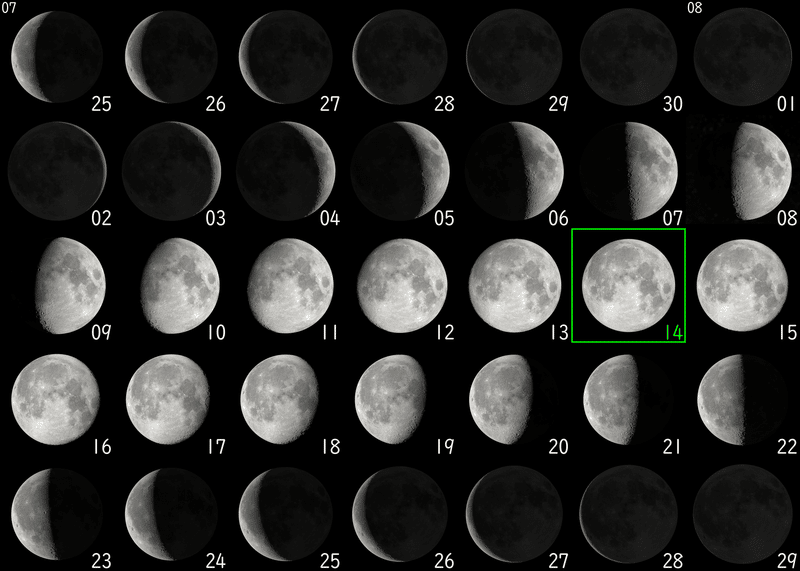
The Total Lunar Eclipse Coincides
Harvest blood moons are also rare in Japan. As of 2024, the previous Jugoya Blood Moon was in the night of 16 Sep, 1997. It was 1 saros before the 27 Sep, 2015 Super Blood Moon, which was visible across Americas and Europe.
However, the next Jugoya Blood Moon in Japan is on 21 Sep, 2192, nearly 2 centuries after the previous one.
Furthermore, Jugoya Full Moon is common while full moons on the 14th day in the lunisolar calendar is extremely unusual. Therefore, this chance is much more unusual than already extremely rare Jugoya Blood Moons.
Time Table at Tokyo (UTC+9)
I used Stellarium 24.1 to capture following simulated moons.
I replaced the moon texture by CGI Moon Kit, and adjusted its contrast.
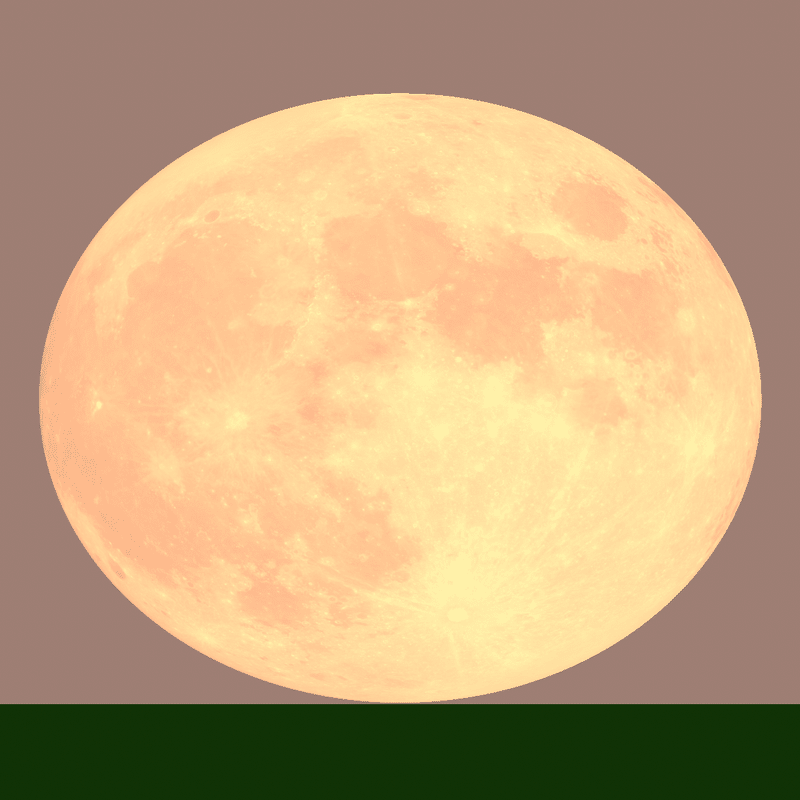







References
この記事が気に入ったらサポートをしてみませんか?
